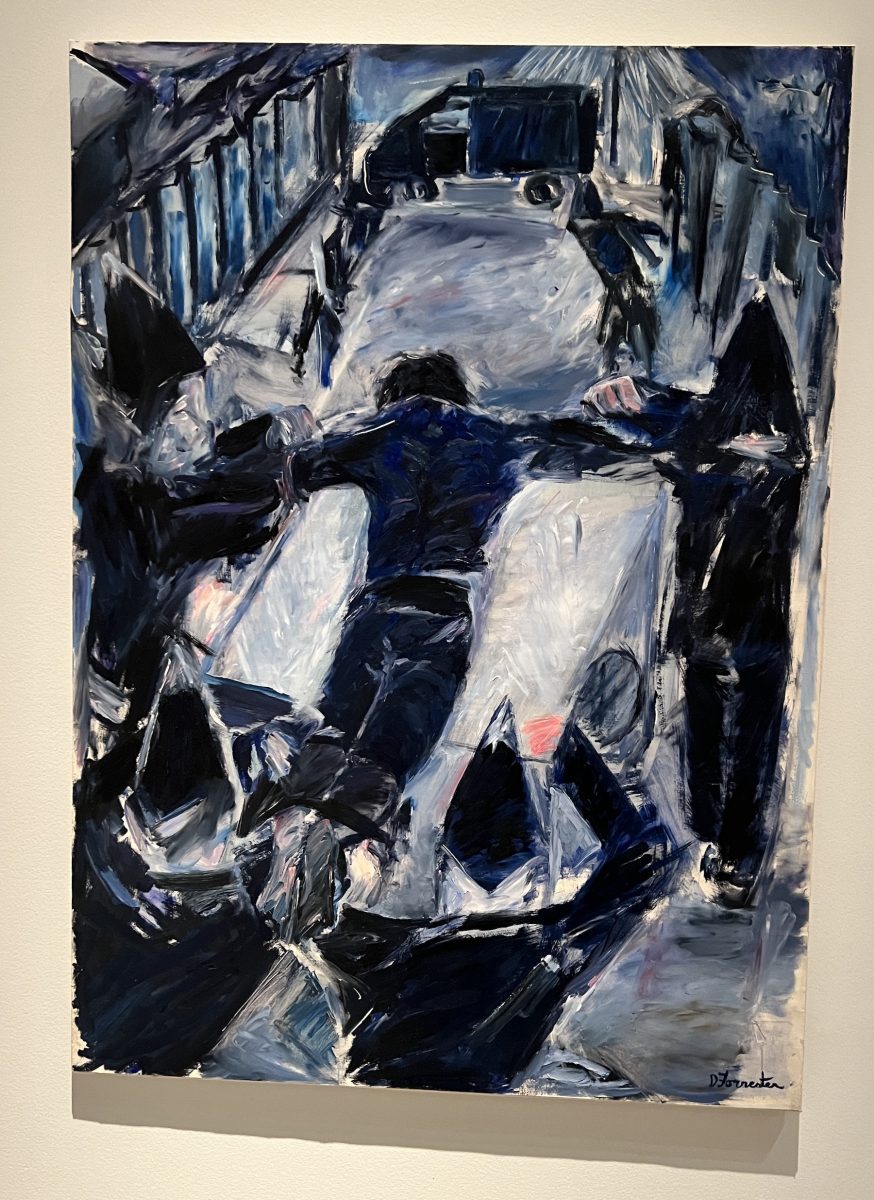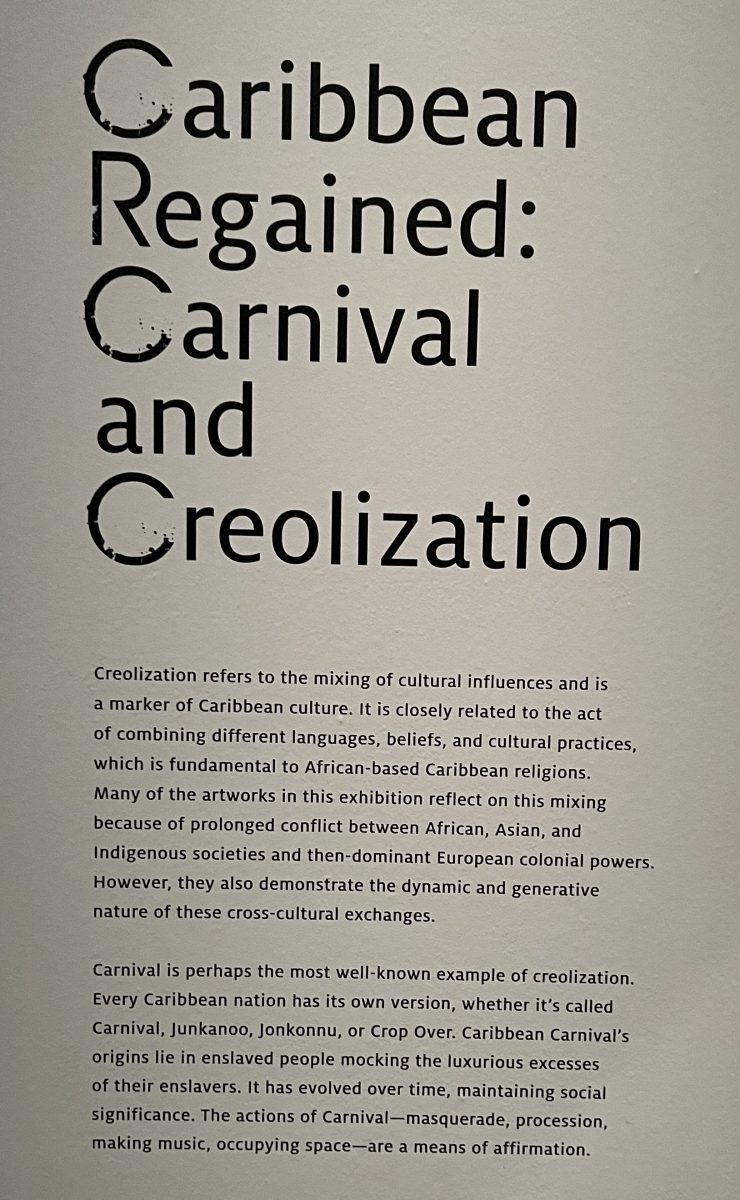The Art Gallery of Ontario is celebrating Black History Month which includes this exhibition. Represented are artists who emigrated from the Caribbean to Britain in the 40s & 50s, those born in Britain and artists currently creating now.
35 artists are represented covering painting, sculpture, book covers, photography, textile, installation and video. It is on until April 1.
One point before I begin, I’m turning off comments in the posts. The spam is getting too much.
The exhibition considers the relationship between the Caribbean Islands and the British Isle from a Caribbean perspective. It was organized by the AGO and originated by Tate Britain. It is co-curated by David A. Bailey, Director International Curators Forum and Alex Farquharson, Director, Tate Britain.
“Plantation K/140, 1976. Donald Locke. Named after a plantation in the artist’s native Guyana.

The artworks “address the Caribbean by examining themes such as the role of culture in decolonization, the socio-political struggles that Caribbean-British people face, the social and cultural significance of home, the reclaiming of ancestral cultures, and the cross-cultural nature of Caribbean and diasporic identity.”
In 1948, Britain passed the British Nationality Act which invited people from the “Colonies” to come live in Britain. However, many did not absorb into British society. “They consciously claimed a heritage that had been fragmented and erased by centuries of slavery and colonization.”
“Tribal Mark II”, 1961, Aubrey Williams, born Georgetown Guyana, 1926
Inspired from his work in Guyana with the Waro people. There he observed rock paintings depicting how to live in balance with nature. It represents the violent colonization of Guyana.

“El Dorado” 1960, Aubrey Williams. A depiction of the Spanish conquest of the Americas in their greed for gold.

“Orchid Bird”, 1960. Ronald Moody, born Kingston, Jamaica 1900.

The Caribbean Artists Movement (CAM), sought to encourage multidisciplinary approaches – poets, novelists, artists. Formed in 1966. Artists in this exhibition were part of that group.

“Talking Music” 1963. Paul Dash, born Bridgetown Barbados, 1946. The painting depicts Paul’s family. His father, with a guitar, is making a point about music. Family life in Barbados.

“Painted Desert” (purple), 1959. “Van Gogh” (red), 1959. Althea McNish born Port-of-Spain, Trinidad and Tobago, 1924. Focusing on textiles, Althea graduated from the Royal College of Art in 1958. She was commissioned to do pieces for the Liberty department store. Her designs appeared in collections of Christian Dior, Vogue and Harper’s Bazaar.


The next section of the exhibition are artists who were either born in Britain or came as children. Images of racism, high unemployment, hostile media and police harassment that were indicative of the 70s and 80s.
Out of this came the Black Arts Movement (BAM). It came out of a National Black Art Convention in 1982. Many worked collectively and networking to explore black experiences in British society.
“The Spirit of the Carnival”, 1982. Tam Joseph born Charlotte Ville, Dominica, 1947. A masquerader surrounded by police and a snarling dog. Inspired by an event at the Notting Hill Carnival. The figure is Egungun, a frolicking presence looking for a way out.

“Death Walk” 1983. Denzil Forrester born St. George, Grenada 1956.

“”Jah Shaka”, 1983. Denzil Forrester. The painting depicts Jah Shaka, a Jamaican sound system operator. It captures the London reggae club scene.””Jah Shaka”, 1983. Denzil Forrester. The painting depicts Jah Shaka, a Jamaican sound system operator. It captures the London reggae club scene.

“She Ain’t Holding Them Up, She’s Holding On (Some English Rose)” 1986. Sonia Boyce born London, England 1962.
The challenges of being a black woman, mother, wife in 1970s Britain. The black rose on the dress counterbalances the English white rose – symbol of white femininity.

“Bob Marley, Shopping for Trench Town Kids, Leeds” 1974. Dennis Morris born Kingston, Jamaica 1960. Dennis met Bob Marley and the Whalers during their UK 1973 tour. He later went on to become art director at Island Records.”



The final gallery – “Past Present Future” are recent works that have a relationship with the works of previous galleries. This theme of Past Present Future has been interweaving throughout the exhibition.
“Blue Devils” 2014. Chris Ofili born Manchester, England 1968
“Blue Devils are traditional characters in Trinadad Carnival that originate from the period of slavery in the Caribbean. In this painting a carnival reveller on the left is confronted by two British policeman.”

I was holding my walking stick with one hand and the camera with another. So did not stop to pick up anything on display nor “tek nuhting”

“Frontlines/Backyards” from the series Virtual Exiles, 2000. Roshini Kempadoo born Sussex, England, 1959. Digital manipulation of Roshini’s original photos and material from private and official archives in Guyana.

This one was on the floor without a designation. I’m sure it must have been somewhere but I was getting tired at this point and needed to sit down.
“a shorn root”, 2022. Rachel Jones, born London, England 1991
From a series of the same name, Rachel explores the shape of the abstract mouth. Here, a single gold tooth.

This was my first “historical” exhibition and I really enjoyed it. Learning cultural experiences I previously did not know. There was a concert with Sharon Marley, eldest daughter of Bob and Rita, on that Friday night. I had planned to attend but by the time I’d finished with the galleries I was exhausted. It’s not easy getting old but I’m making the effort through the works presented at the AGO.
